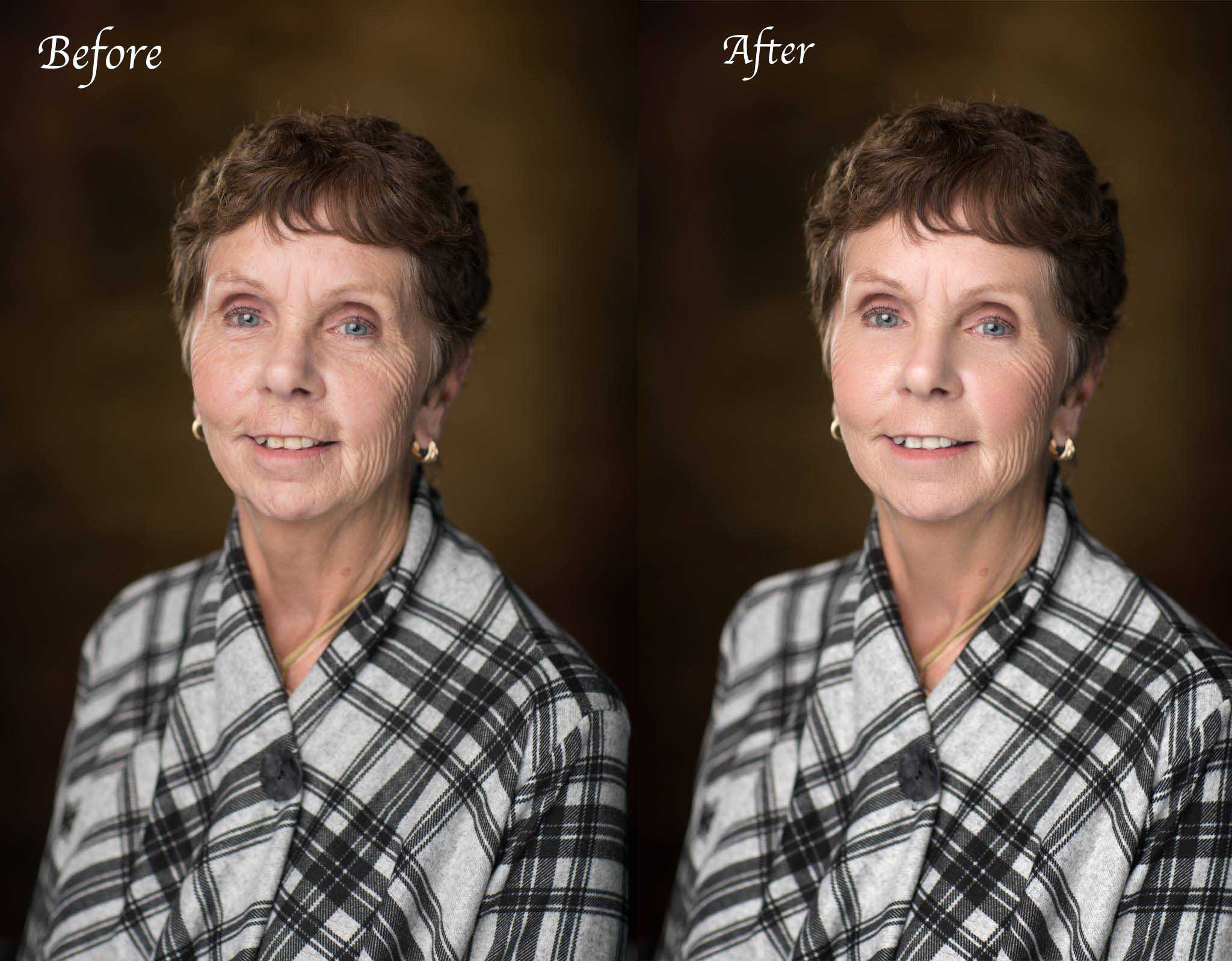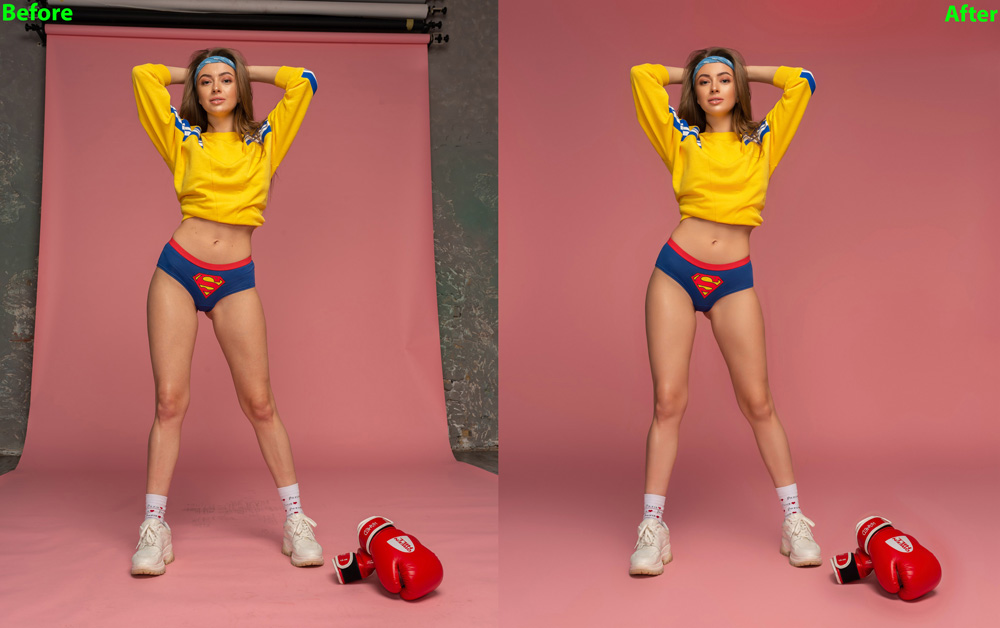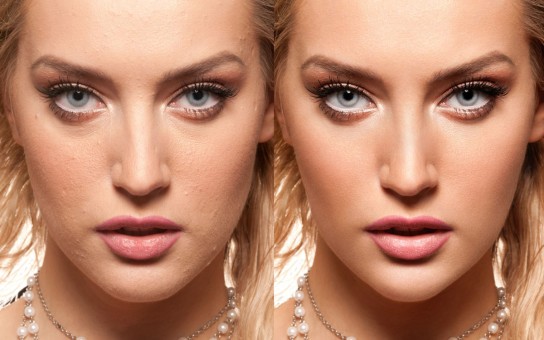Photo retouching refers to the process of manipulating and editing a photograph in order to improve its overall appearance. This can include adjusting lighting and color, removing blemishes or imperfections, and enhancing or removing certain elements of the photo.
Photo retouching is important because it allows photographers and editors to improve the quality of a photo and create a more visually appealing final product. It can help to bring out the details and beauty of a subject, as well as correct any flaws or errors that may have occurred during the photography process. In addition, photo retouching can be used to create a specific mood or atmosphere, and can help to tell a story or convey a message through the photograph.
Photo retouching is commonly used in a variety of industries, including advertising, fashion, and publishing. It can also be used for personal purposes, such as improving family photos or creating artistic works. Overall, photo retouching plays an important role in the creation of high-quality and visually stunning photographs.

What is Photo Retouching?
Photo retouching refers to the process of digitally manipulating and enhancing photographs to improve their overall appearance. This process involves using various software tools to adjust and modify different elements of the photo, such as the color, contrast, sharpness, and brightness, to achieve a desired result.
Photo retouching can also involve removing or adding objects, people, or backgrounds from a photo, as well as correcting flaws or imperfections such as blemishes, wrinkles, and spots. In some cases, photo retouching may involve more extensive changes, such as reshaping or altering the features of a subject, or even creating composite images by combining different elements from multiple photos.
Photo retouching is an important skill for photographers, designers, and digital artists, as it allows them to create visually compelling images that meet specific creative or commercial goals. It is commonly used in a variety of industries, including advertising, fashion, and editorial photography, as well as for personal purposes such as enhancing family photos or creating artistic works.
The History of Photo Retouching
Photo retouching has a long and fascinating history that dates back to the early days of photography. Here's a brief overview of the history of photo retouching:
Early Retouching Techniques (1840s - 1920s): In the early days of photography, retouching was done by hand using a variety of techniques, including pencils, paints, and even scratching the surface of the photograph. Retouchers would often work directly on the print, making subtle changes to improve the overall quality of the image.
Airbrushing and Photochemical Techniques (1920s - 1980s): In the 1920s, the airbrush was invented, which allowed retouchers to apply paint more precisely and with greater control. As photography advanced, new photochemical techniques such as dodging and burning and color correction were developed. These techniques were used extensively in the film and advertising industries to create visually stunning images.
Digital Retouching (1980s - Present): With the advent of digital photography and software such as Adobe Photoshop, retouching became more accessible and easier to accomplish. Digital retouching techniques include skin smoothing, background removal, color correction, and more. Today, photo retouching is a standard part of modern photography and graphic design, and is used in a wide range of applications, including advertising, fashion, editorial, and more.
Throughout its history, photo retouching has been used to enhance and improve the visual appeal of photographs, while also reflecting the cultural and technological changes of the time. While the tools and techniques used for photo retouching have evolved over time, the underlying goal remains the same: to create beautiful and compelling images that capture the imagination of viewers.
How is Photo Retouching different from Photo Editing?
While photo retouching and photo editing are often used interchangeably, they refer to slightly different processes.
Photo editing generally refers to the process of modifying an image in some way, whether that involves adjusting the color and tone, cropping the image, resizing it, or applying filters or effects. Photo editing is a broad term that can encompass a wide range of techniques, from basic adjustments to more complex manipulations.
Photo retouching, on the other hand, specifically refers to the process of improving the appearance of a photograph by removing or correcting imperfections, enhancing certain elements of the photo, and generally improving the overall quality of the image. This can include removing blemishes or wrinkles from a portrait, adjusting the brightness or contrast of a landscape photo, or adding or removing objects or people from a scene.
In other words, photo editing can involve a range of modifications to a photo, while photo retouching is a specific subset of photo editing that focuses on enhancing the image through careful and precise adjustments.
What are the benefits of Photo Retouching?
Photo retouching can offer several benefits, including:
- Improved Visual Appeal: One of the primary benefits of photo retouching is that it can help to improve the overall visual appeal of a photograph. By removing imperfections, adjusting lighting and colors, and enhancing certain elements of the photo, photo retouching can create a more striking and professional-looking final product.
- Greater Control and Flexibility: Photo retouching also allows for greater control and flexibility in the editing process. By using specialized software tools, photographers and designers can make precise adjustments to the photo, fine-tuning it to meet their specific creative goals.
- Highlighting Details: Photo retouching can also help to bring out the details in a photograph, such as textures, patterns, and intricate designs, that might otherwise be overlooked.
- Saving Time: In some cases, photo retouching can also help to save time in the editing process. By automating certain tasks, such as removing blemishes or adjusting color balance, photographers and editors can streamline their workflow and focus on other aspects of the project.
- Better Marketing and Sales: By improving the quality of the photograph through photo retouching, it can help businesses or individuals in better marketing their products, services or brand, and also aid in boosting sales.

Common Techniques in Photo Retouching
Here are some of the most common techniques used in photo retouching:
Color correction: This involves adjusting the colors in the photograph to make them more vibrant and balanced, or to achieve a certain look or mood.
Skin retouching: This involves removing blemishes, wrinkles, and other imperfections from the subject's skin, as well as smoothing out the skin texture and improving skin tone.
Dodge and Burn: This technique involves selectively lightening or darkening certain areas of the photograph to create depth and contrast.
Sharpening: This involves enhancing the sharpness and clarity of the image to bring out fine details and textures.
Background removal: This involves removing the background of the photograph, either to create a transparent background or to replace it with a different background.
Object removal: This involves removing unwanted objects or elements from the photograph, such as power lines or distracting elements.
Color grading: This involves adjusting the color balance and tone of the photograph to create a specific mood or atmosphere.
Resizing and cropping: This involves adjusting the size and composition of the photograph to better fit the intended use or format.
These techniques can be used individually or in combination to achieve the desired result, and photo retouching can involve a combination of both automated and manual editing processes.
Frequently Asked Questions
1. What software is commonly used for photo retouching?
There are several software programs that are commonly used for photo retouching, including Adobe Photoshop, Lightroom, and GIMP.
2. Can photo retouching be done manually or is it mostly automated?
Both manual and automated processes can be used in photo retouching, depending on the complexity of the task and the desired result.
3. Is photo retouching only used for portraits or can it be used for other types of photos?
Photo retouching can be used for all types of photos, including landscapes, architecture, and product photography, among others.
4. How much does photo retouching cost?
The cost of photo retouching can vary depending on the scope of the project and the complexity of the editing required. Some services charge by the hour or by the project, while others offer different pricing models.
5. What types of clients typically use photo retouching services?
Photo retouching services are used by a wide range of clients, including photographers, designers, businesses, and individuals who want to improve the appearance of their photos for personal or commercial use.
6. How can I find a reliable photo retouching service?
To find a reliable photo retouching service, you can search online for providers or ask for referrals from other photographers or clients who have used retouching services in the past. It's important to look for providers who have experience and a portfolio of previous work that demonstrates their expertise.
Tips and Best Practices for Photo Retouching
Here are some tips and best practices for photo retouching:
⦁ Always work on a copy of the original photo: Before you start retouching a photo, make a copy of the original file. This way, you can always go back to the original if you make a mistake or need to start over.
⦁ Use non-destructive editing techniques: When working with software such as Adobe Photoshop, use non-destructive editing techniques such as adjustment layers and masks. This allows you to make changes without permanently altering the original image.
⦁ Work in layers: Create a new layer for each element you retouch. This allows you to make changes without affecting the rest of the image.
⦁ Pay attention to detail: Make sure your retouching looks natural and not overdone. Pay attention to details such as skin texture and lighting.
⦁ Be mindful of color correction: Color correction is an important part of retouching. Make sure the colors look natural and consistent throughout the image.
⦁ Don't be afraid to undo: If you make a mistake or don't like the way something looks, don't be afraid to undo it and try again.
⦁ Take breaks: Photo retouching can be a time-consuming process. Take breaks often to avoid eye strain and fatigue.
⦁ Practice and learn from others: The more you practice photo retouching, the better you'll become. Study the work of other retouchers and learn from their techniques.
Conclusion
Photo retouching is an important aspect of modern photography and graphic design. It involves using a variety of techniques to enhance and improve the visual appeal of a photograph, including color correction, skin retouching, background removal, and more. The benefits of photo retouching are numerous, including improved visual appeal, greater control and flexibility in the editing process, and the ability to highlight details that might otherwise be overlooked. While some may debate the ethics of heavily retouched photographs, photo retouching itself is not inherently unethical and can be used to create stunning and professional-looking images for a variety of creative and commercial purposes.






Post a Comment